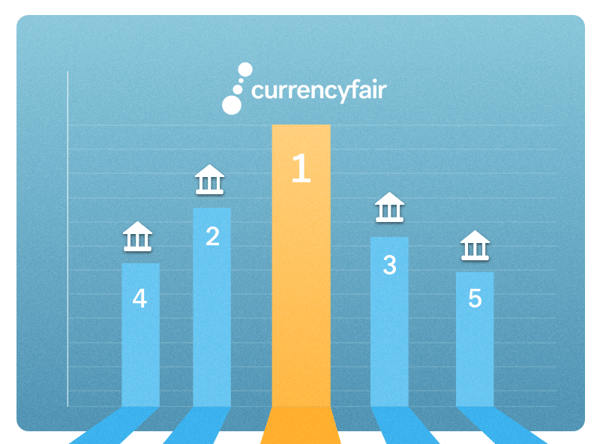Currency News June 2018
Watching the World Cup is a lot like watching the currency markets at play. Sometimes you think there is going to be the obvious winner but then one simple action can cause fortunes to change. Or the underdog that comes out of nowhere, with a last minute surge that takes out the competition.
Let’s kick-off a review of the latest currency news by looking at who were the winners and losers in the markets in June.
New Zealand Dollar
One surprise winner in June was the New Zealand Dollar. What caused its success?
There was an increased appetite for “riskier” currencies like NZD at the start of the summer, when the major market players were not performing as expected.
The NZD/USD exchange rate was proving to be very popular but this eventually subsided following the outcome of the planned, cancelled and then rescheduled meeting between President Trump and Kim Jong Un in Singapore. Preceding the meeting, the NZD/USD exchange rate was able to hold off the competition and climb by almost 2% to be available at 0.7009 on June 13th with CurrencyFair - the day after the meeting - from being available at 0.6875 on May 18th. However since then the NZD/USD exchange rate has failed to regain its June high on June 13th and dropped by over 4% for the remainder of June and into July, reaching 0.6719 July 3rd with CurrencyFair.
The New Zealand Dollar also turned in an impressive performance against the Australian Dollar in June. This month, the NZD/AUD exchange rate has climbed by almost 2% to a one-month high of 0.935 on June 19th with CurrencyFair, before dropping by almost 2.5% to 0.9119 on July 3rd. This was due in part to the release of an ANZ business survey, that indicated shrinking business confidence.
The New Zealand Dollar also made gains against Sterling due to weaker than predicted UK wage growth despite the unemployment rate dropping. When available at a three-month high of 0.52765 on June 1st, the NZD had rallied by over 4% against Sterling from an April 26th low of 0.506 with CurrencyFair. However the New Zealand Dollar failed to play out the rest of June in the same way, with the NZD/GBP exchange rate being available at 0.5123 on June 30th, a drop of almost 3%. Uncertainty around global trade concerns meant the New Zealand Dollar was negatively affected.
Sterling
June has been a poor month for the performance of Sterling. June 11th numbers for repair, maintenance and new work in the UK construction industry had dropped by 3.4% in April - the biggest drop since 2012. Also worrying the Sterling exchange rate was the release of UK manufacturing data that showed that April to be its worst performing month in five years. This added to the overall lack of confidence in the GBP across most of the currency crosses it encountered.
A further factor influencing the play of Sterling in early June, was the Brexit-related argument threatening the Bank of England and the Treasury - the latter fearing that plans for the finance hub of London City to maintain ties with the EU would be rejected, while the former argued against compromises that could leave the UK having the role of “rule taker”.
These economic and political clashes saw the GBP/EUR exchange rate have an erratic performance across June, seeing it top the leaderboard at 1.146 on May 30th before falling by 1.8% to a month-long low of 1.1254 on June 30th with CurrencyFair.
After President Trump “yellow-carded” several countries with his steel tariffs including the UK, the GBP/USD exchange rate was available down at 1.3089 on June 29th with CurrencyFair. This was a drop of almost 9% from a three-month high on April 17th of 1.4348 with CurrencyFair.
There were however some recent noteworthy highlights in the performance of Sterling. Strong UK retail figures reported on June 14th showed the recent warm weather had also heated up the sales figures for May in the UK - with the volume of goods and services being sold online and instore up 1.3% from April, beating a predicted 0.5%.
In light of this positive retail data, the GBP/CAD rate continued to climb to a one-month high of 1.765 on June 22nd with CurrencyFair, which was the only currency cross Sterling seemed to play well against in June.
However Sterling is not out of the woods, with fresh reports of the poorest economic year since 2009 on the horizon and the reduction in forecasted estimates of GDP growth in 2018 and 2019.
Euro
After the resignation of their new Prime Minister, there were June clashes between both the pro-EU and eurosceptic sides of the Italian coalition government. A rising tide of concern has swelled amongst Italy's Eurozone teammates. With Italy being the third largest economy in the Eurozone, the brewing anti-EU sentiment in the Italian government could severely damage future relations.
Of equal concern for the Euro has been the recent issues in the Spanish government. In an act of “democratic hygiene” on June 1st, the Spanish Prime Minister Mariano Rajoy was voted out of his position and replaced by Pedro Sánchez.
After several weeks of political turmoil within the Eurozone, some positive economic news allowed the Euro to make gains. On June 7th, European Central Bank (ECB) Chief Economist Peter Praet signalled an end to the ECB’s quantitative easing strategy and on June 14th, ECB President Mario Draghi finally announced the end of its bond buying programme by the end of 2018.
The EUR/GBP exchange rate reached a three-month high of 0.885 on June 29th with CurrencyFair, having been seen at 0.8642 on April 14th, an almost 2.5% increase. The Euro also made gains against the Canadian Dollar, when the EUR/CAD exchange rate topped a one-month high of 1.55 on June 26th - over 3% higher than when available at 1.5017 on May 22nd with CurrencyFair.
However when ECB President Mario Draghi spoke on June 19th in Sintra, the Euro exchange rate saw a decline against the US Dollar, as he conveyed the ECB’s hesitation to lift interest rates before Summer 2019. The EUR/USD exchange rate dropped by over 0.4% from 1.1601 on June 18th to 1.1552 on June 21st.
Australian Dollar
With just Australia and Argentina being exempt from President Trump’s steel tariffs, it allowed the Australian Dollar to advance forward in the currency markets.
The Australian Dollar scored highly against many of its competing currency crosses in the past few weeks. The AUD/GBP exchange rate reached a three-month high, rallying by over 6% from an April 26th low of 0.541, to being available at 0.5738 on June 4th with CurrencyFair.
The AUD/EUR was also at a three-month high of 0.6525 on June 6th. This was a 5% increase, from being available at 0.6212 on April 21st with CurrencyFair.
However the publication of Australian employment figures on June 14th showed less jobs created than planned as well as a drop in the overall job participation rate. This meant the comeback for the Australian Dollar proved short-lived, with the AUD/USD exchange rate dropping by over 2.8% from 0.7558 on June 14th to being available at 0.7344 on June 28th with CurrencyFair.
US Dollar
The meetings and decisions being taken by President Trump have shouldered the USD over the past few weeks. The USD/CAD exchange rate celebrated reaching a three-month high of 1.329 on June 22nd with CurrencyFair, having traded at a rate almost 6% lower on April 17th at 1.2511.
The USD/EUR exchange rate also responded well to the US political events taking place. The exchange rate reached a one-month high on June 21st of 0.8653 with CurrencyFair, an over 2% increase having previously been seen at 0.8453 on June 7th with CurrencyFair.
The final currency cross the US Dollar rallied against was Sterling. Perhaps it was President Trump’s immigration policy U-turn that saw the USD/GBP exchange rate reach a three-month high on June 28th with CurrencyFair, being available at 0.7643. This was an over 9% increase from its April 15th low of 0.6987.
We will continue to monitor the markets and report on the all major currency movements next month.
Here are some important currency dates for your diary:
Important Dates for your diary:
Tues July 10th - EUR Euro-Zone ZEW Survey (Economic Sentiment) (JUL)
Wed July 11th - CAD Bank of Canada Rate Decision (11 JUL)
Thurs July 12th - USD Consumer Price Index (YoY) (JUN)
Mon July 16th - NZD Consumer Price Index (YoY) (2Q)
Thurs July 19th - AUD Unemployment Rate (JUN)
Fri July 20th - CAD Consumer Price Index (YoY) (JUN)
The news and information contained herein is not investment advice. We intend to merely bring together and collate the latest views and news pertaining to the currency markets – subsequent decision making is done so independently of CurrencyFair and this communication. All quoted exchange rates are indicative. We cannot guarantee 100% accuracy owing to the highly volatile and liquid nature of this currency markets and rates are not guaranteed.










